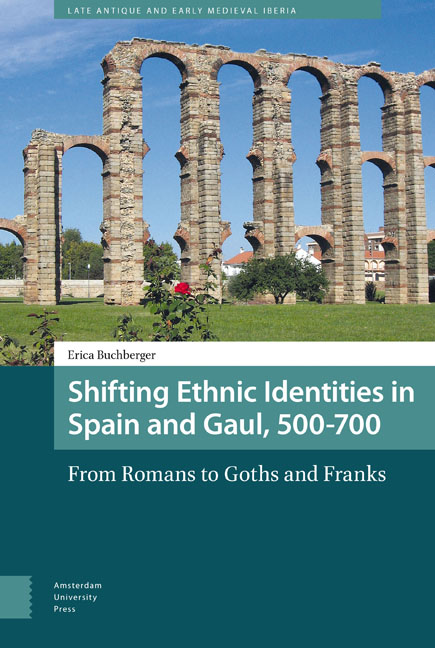Part I - From a Roman to a Gothic World in Visigothic Spain
Published online by Cambridge University Press: 12 February 2021
Summary
In the spring of 507, King Alaric II of the Visigoths was killed while fighting the Frankish King Clovis at the Battle of Vouillé in Gaul. As the Franks moved in to control the former Visigothic territory in the region, the defeated Visigoths retreated from their Gallic capital at Toulouse into the territory they loosely controlled in Spain, keeping only the southern region of Septimania – which they called Gallia or Gallia Narbonensis – of all their Gallic possessions. From this point on, their home would be Spain. Over the course of the sixth century, they would come to dominate the peninsula and to wrest its other inhabitants into (sometimes uneasy) submission. These inhabitants included Germanic Sueves who had settled in Gallaecia, Basques in the north, and the citizens of the former Western Roman Empire whom we often call Hispano-Romans.
As these Romans adapted to being ruled by the Visigoths, their Roman identity would also adapt and ultimately fade away. Unlike in Gaul, as we will see later, this process in Spain was aided by the kings. After a period of Ostrogothic regency, succession crises, and a civil war leading to Byzantine control of some lands along the Mediterranean, Leovigild (r. 569-586) came to the throne. He promptly began a campaign of unification, on multiple levels. Politically, he asserted full, central control over most of the Iberian peninsula. He conquered both semi-independent cities like Córdoba and entire regions like the Suevic kingdom in the northwest – including territory in the south which his rebelling son, Hermenegild, had claimed in the early 580s – and he asserted greater control over places which he already held, like Mérida. Although for purposes of propaganda, these land gains were portrayed as reconquests by a rightful ruler, much of the territory which Leovigild ‘regained’ had probably never truly been under Visigothic control. He also built a new city named for his other son, Reccared, to assert his authority and to portray himself as a proper imperial successor. Along with this territorial unification, Leovigild attempted ethnic unification by giving official sanction in his revised law code to marriages between those of Gothic and Roman descent.
- Type
- Chapter
- Information
- Shifting Ethnic Identities in Spain and Gaul, 500–700From Romans to Goths and Franks, pp. 31 - 36Publisher: Amsterdam University PressPrint publication year: 2017

